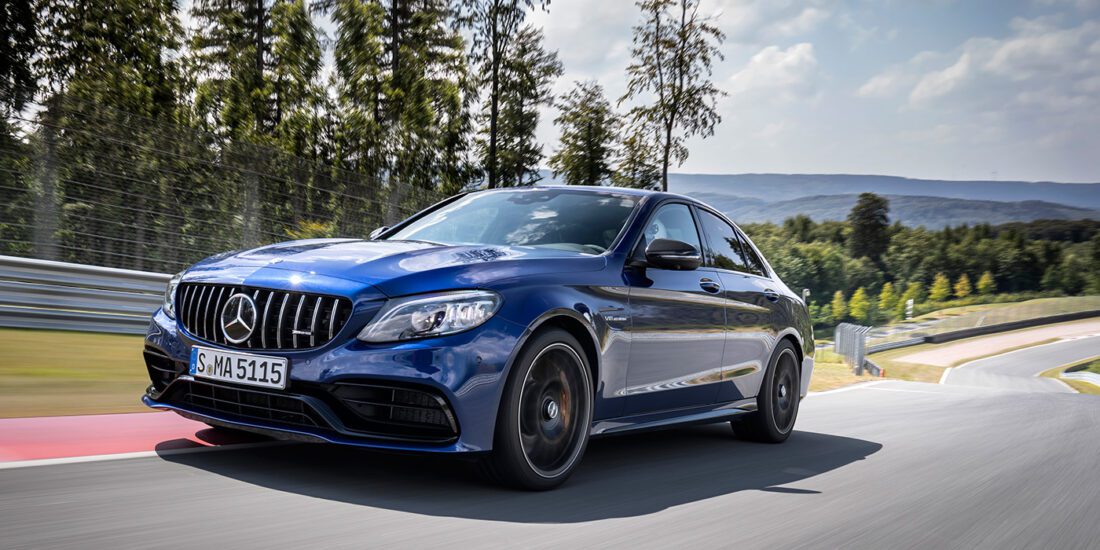
Test drive Mercedes-AMG C 63 S
The difference in elevation on the Bilster Berg track is so great that at the entrance to the next turn, the car plummets downward, and a morning cheesecake with coffee rises to the throat. After exiting this pin, you need to open by placing the accelerator pedal on the floor, because there is a long straight ahead with a very steep uphill climb. But the trajectory behind the summit is completely invisible - it's scary to accelerate, especially on the C 63 S.
The steroid-powered compact sedan picks up speed almost like a ballistic missile. The fact is that the updated C 63 got the AMG Speedshift MCT 9G box with nine steps instead of the previous seven-band. And if, according to the figures on paper, the acceleration of the car has changed insignificantly - the new car gains "one hundred" in 3,9 s versus 4,0 s in the previous one - then it feels much faster.
This is especially felt just when accelerating. The box effortlessly drops gears, throwing the car forward. The transmission rate of fire is also ensured by a special design. The architecture of the AMG Speedshift MCT is similar to the classic nine-speed “automatic” of civilian Mercedes, but the torque converter is replaced with an electronically controlled wet clutch. It is this node that provides the switching time, measured in milliseconds.
When a flurry of torque instantly hits the single driving rear axle, the sedan with its heavy V8 and unloaded stern begins to wag its tail. It is for this reason that AMG engineers have come up with something else for the updated C 63.
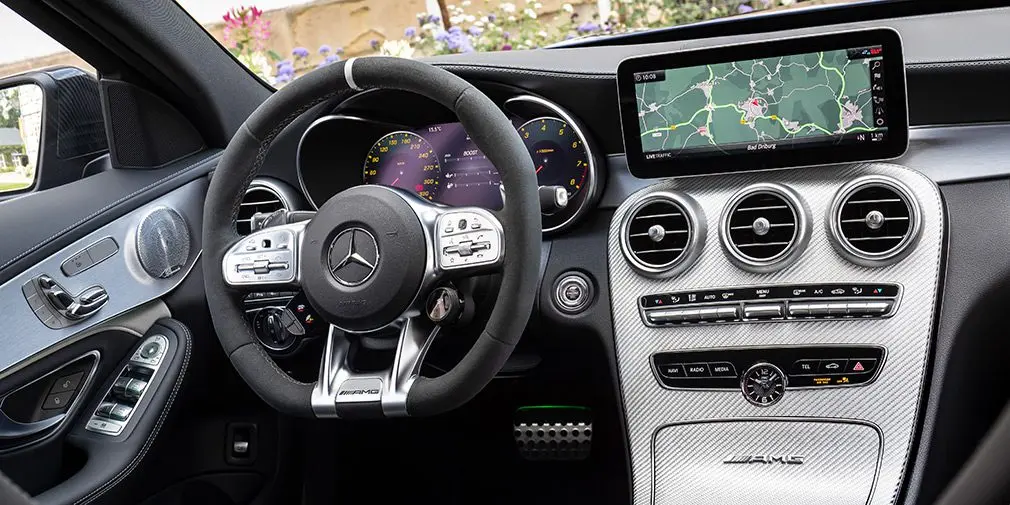
Inside, it is very easy to distinguish the updated C-Class from its predecessor. On the steering wheel of the new car there were touch-sensitive keys for controlling the on-board electronics, which were previously only found on older Mercedes.
A pair of new buttons, fixed to the lower vertical spoke of the steering wheel, immediately catch the eye. The first, like Ferrari's signature Manettino or the Porsche Sport Chrono washer, is responsible for switching between driving modes, and the second for adjusting the stabilization system. The latter here are controlled by a separate key, since the masters from Affalterbach have conjured over them especially painstakingly. After all, there are now ten ESP algorithms.
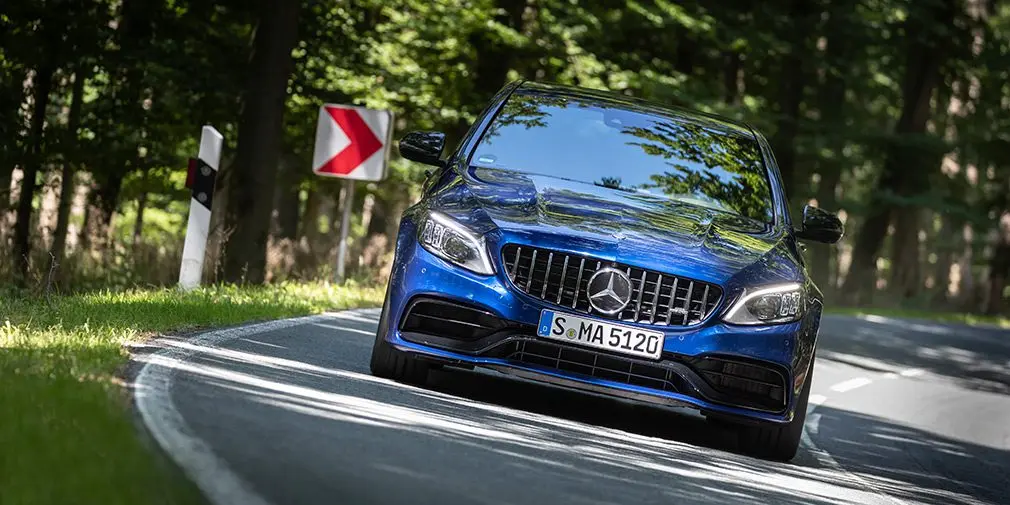
The driver can adjust the stabilization system as he wishes, up to a complete shutdown. Each of the modes is like a separate access code to all new levels of driving pleasure. But this function is available together with the "Race" mode in the Dynamic Select mechatronics settings exclusively on the top 510-strong version of the C 63 with the letter S.
As well as the new Dynamics function, integrated into the mechatronics settings. It changes the vehicle's steering, making it understeer or oversteer, depending on the selected mode. Although in essence Dynamics works like a typical system for changing the thrust vector, with the help of brakes, it presses the wheel on the inner radius and creates additional torque on the outer one. And do not forget that all this appeared on the C 63, taking into account the presence of a differential with electronic locking.
It is incredibly difficult to understand all the intricacies of these settings at once. But you can still understand how they change the character of the car. You feel them especially well when you find yourself behind the wheel of a coupe.
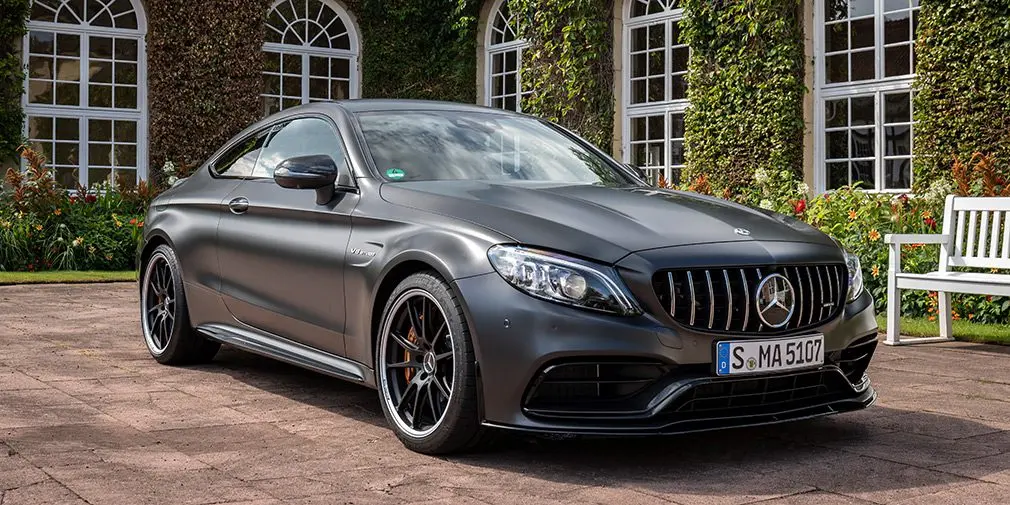
If the C 63 S sedan leaves the impression of a hooligan car, on which one wants to spin "dimes", then the coupe is an ultra-precise racing instrument. With a shorter wheelbase, wider rear track, increased body rigidity and other chassis settings, it feels like a monolithic slab that simply cannot be knocked off course. However, only until you start experimenting with these very driving modes, the Dynamics system and ESP settings.
With stabilization relaxed or completely disabled, the coupe is not as playful as the sedan, but rather more wicked. The car also slides easily with the rear axle, but it breaks down sharper and sharper into the skid itself. And the speed of these maneuvers, as a rule, is higher.
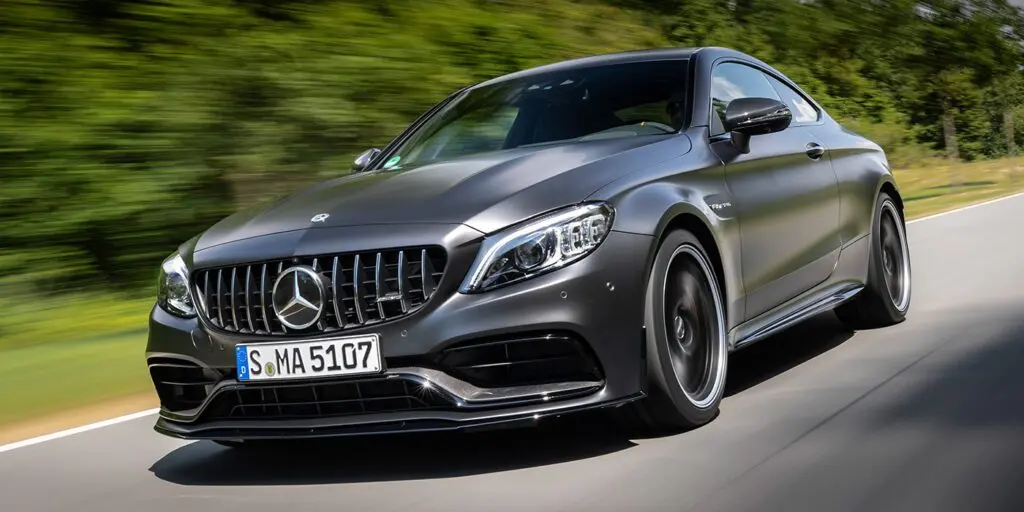
Therefore, having pampered a couple of times with cornering in a controlled drift, on the third I almost flew into the bump stop. The hand itself reached for the washer on the steering wheel and returned the car's settings from Race to Sport +, in which the stabilization, although relaxed, still insures. Shy? I agree. But here are nine lives, and I have one.
| Mercedes-AMG C 63 WILL | ||
| A type | Coupe | Sedan |
| dimensions (length / width / height), mm | 4751/1877/1401 | 4757/1839/1426 |
| Wheelbase, mm | 2840 | 2840 |
| engine's type | Gasoline, V8 | Gasoline, V8 |
| Working volume, cubic meters cm | 3982 | 3982 |
| Power, hp with. at rpm | 510/5500-6250 | 510/5500-6250 |
| Max. torque, Nm at rpm | 700/2000-4500 | 700/2000-4500 |
| Transmission, drive | 9-speed automatic transmission, rear | 9-speed automatic transmission, rear |
| Maksim. speed, km / h | 290 | 290 |
| Acceleration to 100 km / h, from | 3,9 | 3,9 |
| Fuel consumption (city / highway / mixed), l | 14/7,8/10,1 | 13,5/7,9/9,9 |
| Cargo space, l | 355 | 435 |
| Price from, $. | Not announced | Not announced |